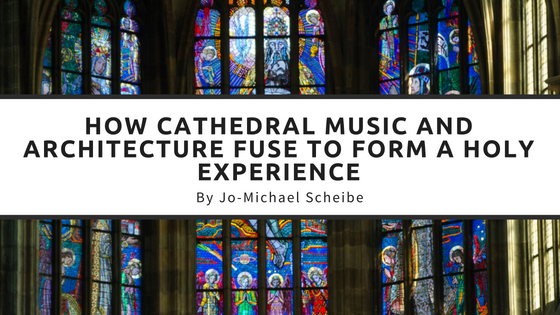Think about the moments you walk into a cathedral; what are some of the first features that you are likely to encounter? What is it that people experience–even people who are not religious at all–that contribute to making a physical space feel holy or ethereal, that differentiates walking into a cathedral from walking into a supermarket.
The deep undertones of the organ radiating around the interior, perhaps, complemented by its golden fluted structure reaching up toward the sky. Or, maybe, the alternating yet geometric iconography or ornate decorations that line the walls, complemented by the choir singing steady hymns. On the exterior, there is the steady rhythm of the buttresses alternating with the opening of stained glass windows that create a sort of rhythm for the eye to enjoy.
These two facets of experience–music and architecture–are undoubtedly parallel and even go so far as to fuse and perform an experimental replication of the material. Many music theorists and musicians have tried to pinpoint exactly how these two facets connect, primarily drawing on the relationship between rhythm, texture, harmony, and proportion to drive their arguments. Johann Wolfgang von Goethe comments on this interconnection, attributing that architecture is, at its very core, “music is liquid architecture; Architecture is frozen music.” Would this not imply that music, on the other hand, is architecture in motion?
From the architectural realm of this entanglement, Frank Lloyd Wright claims that “When I see architecture that moves me, I hear music in my inner ear.” For him, the rhythms and harmonies of the architecture invoke the music directly.
This point can be explored further by delving into the way specific genres and rhythms are used to enhance particular spaces. For instance, the idea that organs are a grandeur instrument with a matching sound with the aim being to reach the sky, as is the purpose in mind when designing cathedral architecture. It would be considered completely inappropriate and un-enhancing to the space to play heavy metal or hip-hop in a cathedral, as the rhythms and harmonies would not be compatible with the design of the area.
Thus, it is fitting to create patterns in sacred spaces that can trigger a profound experience in those engaging with space. This experience is formed, of course, not just by music and sound and not only by visual grandeur but by the coalescence of the two, which work together to heighten the holy space and create a feeling of ethereality.

